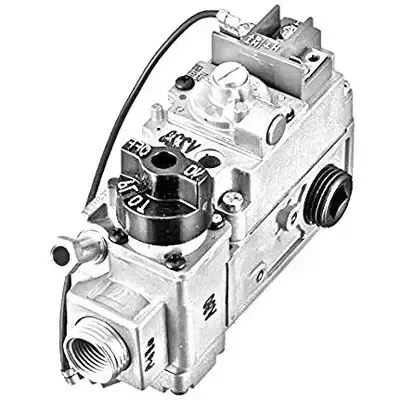
How Gas Fireplaces Work
The Basics Of “How Does A Gas Fireplace Work”
Many homeowners love their gas fireplaces but only know that gas comes in, somehow gets lit and makes fire. This simple guide will illustrate how a common gas fireplace works, without diverging on every single variation of gas fireplace available today.
Fuel: Natural Gas Or LP (Propane)
Gas, either natural gas or propane, comes into your home through a 1-inch pipe called the “main” from the source. The source can either be a gas meter or a tank filled with gas. From the main, a connection is made and run to your fireplace. Generally, there is a valve inline that will allow you to shut the gas to the fireplace off if required.
Getting Gas To The Fireplace
The gas line that is run to your gas fireplace is connected to a gas valve, sometimes called a regulator. The gas will flow through the valve and go to what is commonly referred to as a Pilot Assembly.
The Thermocouple
The Pilot Assembly will have 3 main parts: The pilot which produces a small flame, the thermocouple, and the thermopile. The thermocouple’s job is to only let gas through when it is warmed up by the pilot. When an active flame from the pilot heats up the thermocouple, it creates just enough electricity to keep a valve open, allowing the gas to flow through. If the pilot goes out, the thermocouple cools down, stops producing electricity, and can no longer hold the gas valve open, which shuts off the flow of gas. If the thermocouple fails, the gas will never flow through. For now, just ignore the thermopile, as it just generates a bit more electricity that is needed for remotes and wall switches.
What If The Pilot Light Goes Out On My Gas Fireplace?
Here is what happens if your pilot light goes out. The thermocouple will cool down, stop generating electricity, and stop holding the pilot light’s valve open and there will be no gas flowing to relight the pilot light with. To get around this, many pilot lights have a button or knob you can use to temporarily allow enough gas to get through to relight the pilot light. You can either light the pilot light with a piezo sparker (similar to the buttons the light gas grills) if your unit has one, or you can use a match (safely). After heating up the thermocouple, there is no need to use the button to hold the valve open as the heated thermocouple will do that for you.
Switches
The main valve for your main fireplace burner is generally controlled by some sort of switch or remote control. Until this switch is set to on, your main burner will not gas any gas flowing to it.
The Main Burner
Once your gas makes it past the main valve, the pilot light will ignite the gas flowing through. This creates the flame that you can enjoy with a good book and a mug of hot chocolate.
But That’s Not How MY Gas Fireplace Works
Maybe not. What we have just described are the basics of what is called a millivolt gas fireplace system. There are a few variations of these. Technology stands still for no one, and there are some very ingenious ways that manufacturers have found to do the same thing, but in a different and sometimes safer way. We will definitely be writing some articles about those advancements, and link them here when complete. For now, however, let’s wrap up with a review:
Summary
How do gas fireplaces work?
Gas flows into a series of valves attached to your gas fireplace.
The valves are always closed unless something opens it. This prevents gas from flowing into your home when the fireplace is not lit.
A device called a thermocouple will hold open the pilot light valve as long as the pilot light is lit.
The larger valve for your main burner is controlled by a wall switch or remote control. This larger valve will not open until the remote or wall switch is set to on.

